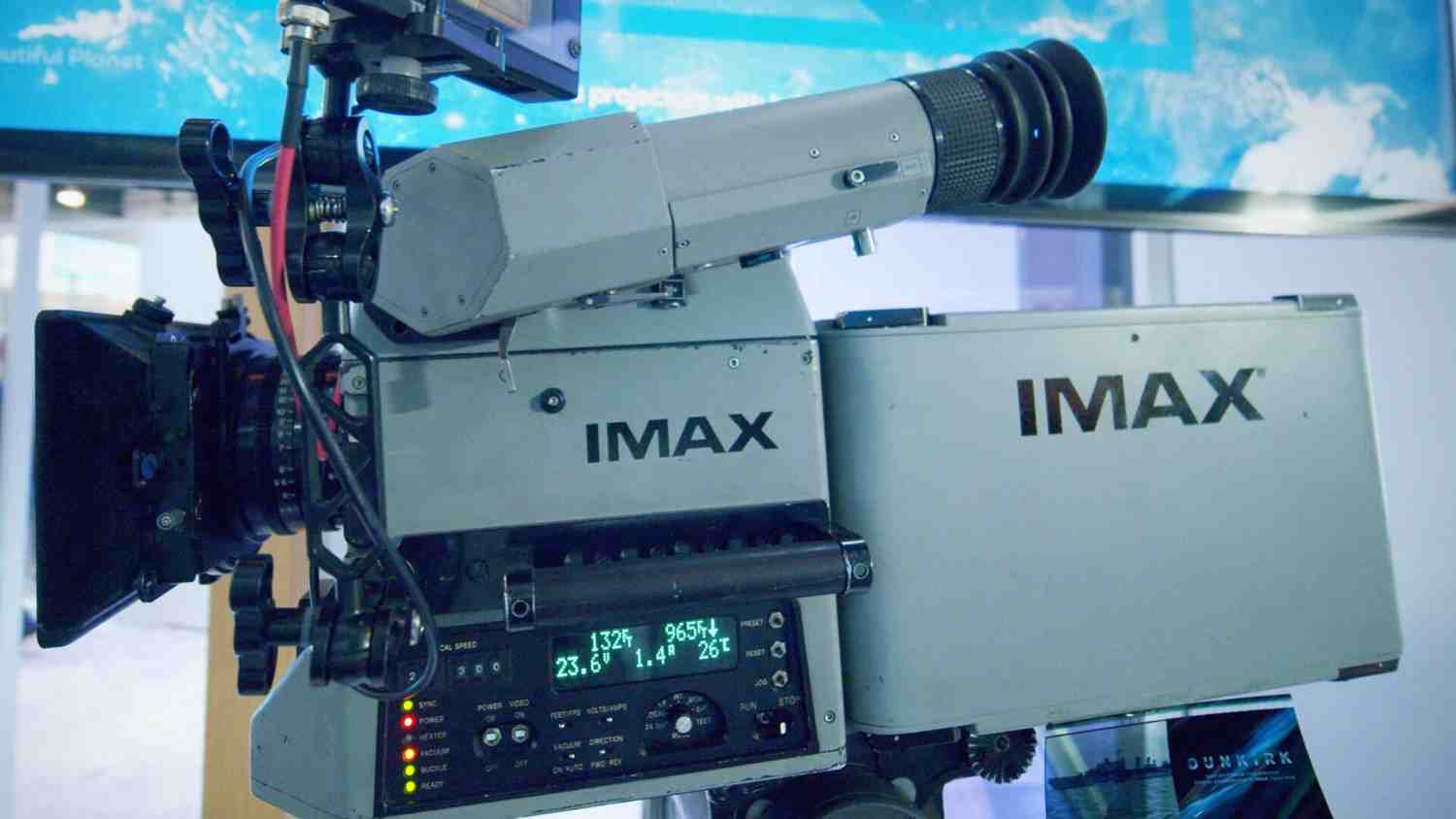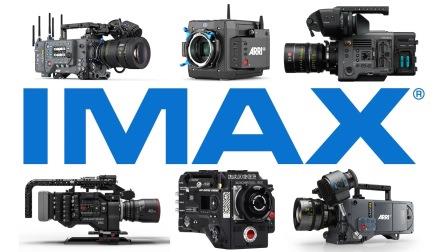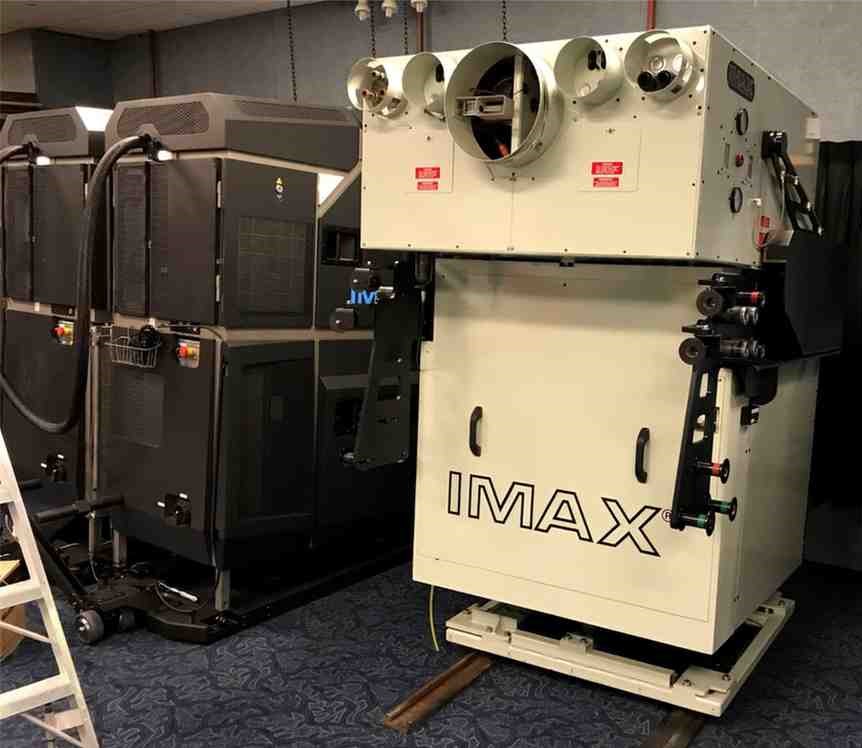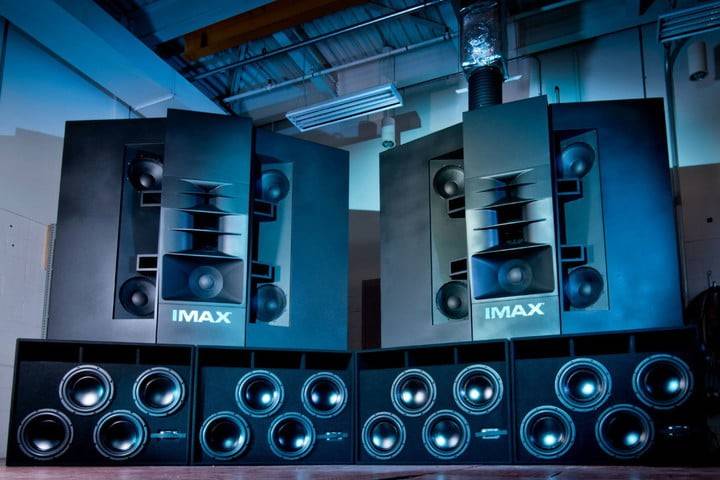
“Barbenheimer” has been an international sensation and has been trending over the internet for the past few weeks, even earning over a Billion USD worldwide. We often hear phrases like “IMAX,” “shot with 15/70 mm IMAX cameras”, and “the first film to be shot in IMAX black and white” attached to Barbenheimer’s darker half — Oppenheimer. We see a common word here — IMAX. But what does it all mean? Why so much hype? And most importantly, is there IMAX in Nepal?
IMAX: An Introduction
For starters, IMAX is a system developed between the late 1960s and early 1970s. It comprises multiple aspects such as cameras, film formats, projectors, sound systems, and even theatres. Given that IMAX is an entire system and means a lot of different things, it gets very complicated very fast. For example: Filmed for IMAX and Shot with IMAX film cameras may sound similar, but they mean very different things. Confusing? We know! That is exactly why we are here. In this article, we will attempt to explain various nuances of IMAX to you.
IMAX Film Format
Whenever anyone mentions IMAX, our brains automatically think of a high-quality video and very large screens. And rightfully so. This high-quality video is all thanks to the IMAX film format. In order to understand the true scale of the IMAX film format, we need to understand what a normal film format is. Even before getting into that, here, a film refers to a thin, flexible strip of plastic or other material coated with light-sensitive material stored inside a reel used to capture images. Yes, the old–school stuff.

So there are various film formats available in the market, among which the 35mm film with 4 perforations is the standard. This film format is also referred to as the Academy Format. Now, there is another format which is a 70mm film with 5 perforations. This format is significantly wider and stores much more details than the standard 35 mm film frame. And now, if we stack 3 of these 70mm films side by side, we get 1 IMAX film with 15 perforations. The area of an IMAX film is about 830% larger than the standard film format. As a result of the massive size of the film, we get about 50% more images in every frame and a video quality that would be equivalent to…. drumroll please… a staggering 18K resolution!
IMAX Cameras
Now that we have explained to you the massive size of an IMAX film. You can guess what an IMAX camera must be like. The camera is massive, super loud, and very hard to work with. The camera weighs a minimum of 20 kilos by itself. It can go over 100 kilos, depending on the add–on and varying technology of the camera. An IMAX Film Camera is said to be insured for $5,00,000 each.
Given such a hefty amount of insurance, we can imagine how much the company values its camera such that you cannot actually buy the camera. You can only rent it, that too for upward of $16,000 per week. After spending the big bucks for the big equipment, you produce an 18K resolution movie with a 1.43:1 aspect ratio. Along with that, you get to market your movie as “Shot with IMAX Film Cameras.”

Digital Cameras
The number of movies shot with IMAX film cameras is very low as are only 12 of them in the entire world. Even when movies are shot with them, it’s mostly limited to select sequences. Even then, it is one of the major highlights of the movie. Given the limited number of IMAX film cameras, IMAX Corporation expanded its wings into digital cameras as well in 2020. Here, IMAX Corporation certified certain high–end digital cameras that could shoot in resolutions of up to 8K and a 1.90:1 aspect ratio.
As you can see, the resolution and aspect ratio are not on par with the OG IMAX film cameras. Due to this, movies shot with IMAX-certified digital cameras market themselves as “Filmed for IMAX.”

Even when a movie has used IMAX film cameras and film format, it doesn’t mean you’re getting the full IMAX experience. That’s because you’ll still need an IMAX theatre with IMAX projectors and a sound system to be able to get the full experience. Let’s start with IMAX Projectors.
Projectors
There are three different types of IMAX projectors: IMAX 15/70 mm film projector, IMAX with Laser, and IMAX Xenon. IMAX 15/70 mm film projector is the real deal here. This is the old school projector where the film is running through a light source in order to project it onto the screen. IMAX 15/70 mm film projector runs the film at a speed of over 1.5 metres per second through a light source. The said light source is a Short Arc Lamp with 15,000 Watts of power. This projector allows you to project movies with 18K resolution onto massive screens that can be up to 38 X 22m in size.

IMAX With Laser
The second-best thing is the IMAX with Laser projectors that can project onto massive IMAX screens, albeit not on 18K. IMAX with Laser uses dual 4K projectors, where both the projectors project images superimposed on one another. The images from these projectors only have a half-pixel offset. IMAX with Laser can project movies in a 1.43:1 ratio using this clever technology.
IMAX Digital
Finally, IMAX Xenon is the weakest projector among the bunch. Also known as IMAX Digital, it uses a dual projector system similar to IMAX with Laser. But the projectors used are only of 2K resolution, which offers the same quality as a normal theatre. This projector can only achieve an aspect ratio of 1.90:1, which again isn’t drastically different from the normal aspect ratio of 2.40:1. Only offering 1/8th the resolution and not offering the real IMAX aspect ratio at all, critics refer to IMAX Xenon as “LieMAX.”
- You might also like:
Theatres
 Moving onto theatres, there are two types of IMAX theatres. First of which is a purpose-built theatre with signature IMAX seating. The seating of these theatres can be rather steep and curved around the screen. These types of theatres are gigantic, with multiple–storied screens. Some of them even have curved screens. These theatres may have both IMAX Film Projectors and IMAX with Laser. There are only 55 theatres worldwide that have IMAX 15/70 Film Projectors. The other ones are much smaller retrofitted auditoriums. These auditoriums are more likely to feature IMAX Xenon. Some of them may have IMAX with Laser at best.
Moving onto theatres, there are two types of IMAX theatres. First of which is a purpose-built theatre with signature IMAX seating. The seating of these theatres can be rather steep and curved around the screen. These types of theatres are gigantic, with multiple–storied screens. Some of them even have curved screens. These theatres may have both IMAX Film Projectors and IMAX with Laser. There are only 55 theatres worldwide that have IMAX 15/70 Film Projectors. The other ones are much smaller retrofitted auditoriums. These auditoriums are more likely to feature IMAX Xenon. Some of them may have IMAX with Laser at best.
Sound System

In terms of sound system, IMAX uses DTS:X audio technology with 12 channels of surround sound. We may say it is the second-best thing after something like Dolby Atmos with 64 channels of surround sound. Even though it may not be as good as Dolby Atmos, the IMAX sound system can still pack a punch. These speakers are capable of pushing out so much air that they can blow out candles.
What’s a Real IMAX?
To summarise, Real IMAX is basically any movie that checks all these boxes :
- Shot using an IMAX Camera that can be rented for $16,000 per week
- Uses IMAX (15/70 mm) film that is 83 times larger than standard film
- Played using IMAX Film Projector that uses 15,000 Watt Short Arc lamps as a light source
- Projected in a purpose-built theatre that can have a screen stretching multi-stories
- Projected in a 1.43:1 aspect ratio with a quality of up to 18K.
Checking all these boxes is extremely rare and difficult. Whenever all these boxes are checked, viewers get a once-in-a-lifetime experience. With off-the-charts picture quality and a screen that occupies the entire field of vision, viewers can feel as if they are inside the movie.
What about IMAX in Nepal?
Sadly, there are no IMAX theatres in Nepal. So, enjoying the epitome of a movie-going experience is not possible in Nepal. The best we have is a handful of theatres using a single 4K projector in one of their Audi. If you wish to watch a 15/70 IMAX movie, the nearest location to do so would be a 5-hour flight to Guangdong, China. Whereas, if you are going to settle for the second–best thing, i.e., IMAX with Laser, you could travel to New Delhi, India. The ticket will cost you upward of Rs. 500 (converted).
Possibility of IMAX in Nepal
Even though there are no IMAX theatres in Nepal at present, could we have one in the future? After all, we are pretty quick in introducing new technology in the country. Realistically speaking, the chances of an IMAX theatre being built in Nepal are next to none.
A quick search suggests that a single IMAX projector costs a minimum of 1,00,000 USD. Since we need a pair of those projectors to complete a setup, that’s 2,00,000 USD for projectors alone! An entire theatre can cost up to 10,00,000 USD or more. Assuming an exchange rate of 130, that would be 13 Crore Rupees or more! This hefty investment means that the tickets for IMAX shows will cost a minimum of Rs. 800 per person. Despite the growing movie culture in Nepal, we don’t think enough moviegoers are willing to pay the price for a single viewing.
On top of that, the only movies that would be available in IMAX format would be Hollywood movies, which isn’t the primary form of media consumed here in Nepal. Considering this, IMAX may not be a very profitable business, which in turn makes investment from a private corporation anytime soon rather unlikely.
Our only hope in introducing the coveted format to Nepal anytime soon would be from a public sector like a Museum. After all, IMAX was primarily used to shoot documentaries that cover larger-than-life spectacles, such as space exploration and summiting Everest. But we all know that such an investment from the public sector is rather unlikely too.
Conclusion
In conclusion, IMAX is the highest form of cinema in the World, and getting to witness it here at home anytime soon is rather unlikely. But, hey, we did not think we would see a day without load shedding in Nepal either. So, you never know!







![Best Gaming Laptops in Nepal Under Rs. 250,000 (रु 2.5 Lakhs) [2025] Best Gaming Laptops Under 2.5 lakhs in Nepal [Feb 2025 Update]](https://cdn.gadgetbytenepal.com/wp-content/uploads/2025/02/Best-Gaming-Laptops-Under-2.5-lakhs-in-Nepal-Feb-2025-Update.jpg)
![Best Gaming Laptops in Nepal Under Rs. 120,000 (रु 1.2 Lakhs) [2025] Best Budget Gaming Laptops Under Rs 120000 in Nepal 2025 Update](https://cdn.gadgetbytenepal.com/wp-content/uploads/2025/05/Best-Budget-Gaming-Laptops-Under-Rs-120000-in-Nepal-2024-Update.jpg)
![Best Laptops Under Rs. 80,000 in Nepal [2025] Best Laptops Under 80,000 in Nepal March 2025 Update](https://cdn.gadgetbytenepal.com/wp-content/uploads/2025/03/Best-Laptops-Under-80000-in-Nepal-March-2025-Update.jpg)
![Best Gaming Laptops in Nepal Under Rs. 200,000 (रु 2 Lakhs) [2025] Best gaming lapotp under 2 lakhs Nepal Feb 2025](https://cdn.gadgetbytenepal.com/wp-content/uploads/2025/01/Best-Gaming-Laptops-Under-2-Lakh-Nepal-Feb-2025-Update.jpg)

![Best Mobile Phones Under Rs. 15,000 in Nepal [Updated 2025] Best Phones Under 15000 in Nepal 2024 Budget Smartphones Cheap Affordable](https://cdn.gadgetbytenepal.com/wp-content/uploads/2024/03/Best-Phones-Under-15000-in-Nepal-2024.jpg)
![Best Mobile Phones Under Rs. 20,000 in Nepal [Updated] Best Mobile Phones Under NPR 20000 in Nepal 2023 Updated Samsung Xiaomi Redmi POCO Realme Narzo Benco](https://cdn.gadgetbytenepal.com/wp-content/uploads/2024/01/Best-Phones-Under-20000-in-Nepal-2024.jpg)
![Best Mobile Phones Under Rs. 30,000 in Nepal [Updated 2025] Best Phones Under 30000 in Nepal](https://cdn.gadgetbytenepal.com/wp-content/uploads/2025/01/Best-Phones-Under-30000-in-Nepal.jpg)
![Best Mobile Phones Under Rs. 40,000 in Nepal [Updated 2025] Best Phones Under 40000 in Nepal 2024 Smartphones Mobile Midrange](https://cdn.gadgetbytenepal.com/wp-content/uploads/2024/02/Best-Phones-Under-40000-in-Nepal-2024.jpg)
![Best Mobile Phones Under Rs. 50,000 in Nepal [Updated 2025] Best Phones Under 50000 in Nepal](https://cdn.gadgetbytenepal.com/wp-content/uploads/2025/01/Best-Phones-Under-50000-in-Nepal.jpg)
![Best Flagship Smartphones To Buy In Nepal [Updated] Best flagship phone 2025](https://cdn.gadgetbytenepal.com/wp-content/uploads/2024/07/Best-Flagship-Phones-who-is-it-ft-1.jpg)